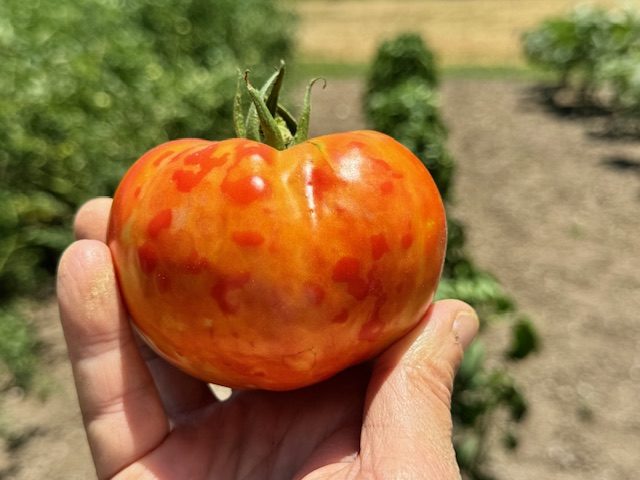By Clint Thompson
The ongoing drought is slowing disease pressure among Alabama vegetables, says Ed Sikora, professor and Extension plant pathologist in the department of entomology and plant pathology at Auburn University. But that doesn’t mean disease pressure is quiet across all vegetables, especially tomatoes.

Sikora outlined what tomato diseases are present across the state and what can be done as far as management is concerned.
“As far as diseases, what I’ve been seeing on tomatoes in recent weeks in commercial fields, we’ve seen a lot of bacterial spot. You see it both on the foliage and on the fruit. It was probably coming in with the transplants and then took off with the early season moisture. With that, growers can try to use copper products to slow it down, though it’s usually a losing battle as the season progresses,” Sikora said.
“I’ve seen southern blight, a soil-borne fungal disease on tomatoes and peppers. That’s a constant problem each year. You’ll see plants wilt and die, and you usually see a white mold right at the soil line where the pathogen attacks the plant. It’s a hard one to control during the season. There are some products available. Typically, they only offer suppression of the disease.”
Commercial growers have also experienced tomato spotted wilt virus.
“That’s been popping up more in the home garden situation but also in some commercial fields where growers might be using non-resistant varieties. Resistance is usually the best way to go but we have heard of some resistance breaking strains that have pathogens,” Sikora said. “Those plants will typically be stunted, yellowed; you might see some bronzing of the foliage.”









